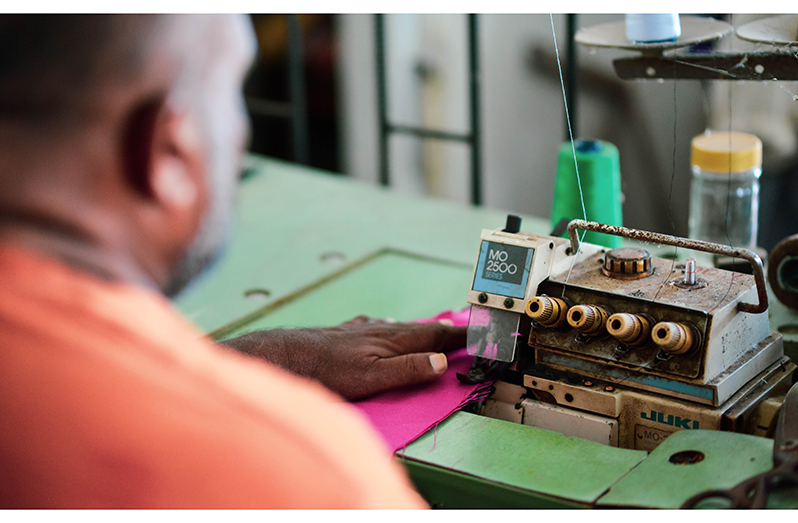The uniqueness of having something that is one of a kind
THE long hours of peddling a sewing machine, cutting and stitching pieces of fabric together to exact measurements, create a garment that leaves the wearer happy and looking good. This is what Kumar Singh says tailoring is all about.
Kumar, known locally as Danny, was born and raised in the village of Goed Fortuin. Today, at 58 years old he is one of the village’s most revered tailors. And it seems as though he is among the last, as the art is going untaught to newer generations. But Kumar believes tailoring to be a worthwhile trade and is working to keep it alive.
Kumar was born and raised in the village of Goed Fortuin. But the Goed Fortuin of old was drastically different from that of today, with its own pastimes, fun, culture, community and challenges.
“Growing up in Goed Fortuin was plenty fun,” Kumar stated. The village boys of the time loved the activities associated with country life. They enjoyed and indulged in everything from sports and fishing to walks down the back dam. He went on further, stating, “We played a lot of sports. We had a school right across the road and it was just fun.”

But just as there were highs, there were lows. And perhaps one of the biggest challenges Kumar faced was not completing school. “I didn’t have much education,” He shared. “I was the youngest, and I sacrificed my education to help my father. I have two brothers and three sisters. I hardly went to school.”
Kumar completed primary school before advancing to West Demerara Secondary School, where he left school before third form. “I left and I started to learn certain trades. I learned sewing, and I worked in the bulk factories in Guyana,” Kumar stated.
Kumar’s passion was first ignited as a child. His mother, a seamstress, and the young woman she worked with taught a young Kumar how to sew. This was the beginning of a career and lifetime of tailoring, sewing and eventually designing clothes. I grew up and started helping my mother sew school shirts when I was just nine. My feet could barely reach the pedals, but I would peddle and sew.” In the nearly 50 years he has called himself a tailor, Kumar was entirely self-taught up until a few months ago when he joined a free sewing class set forth by the government. He graduated and earned a certificate.
Walking us through the process, Kumar emphasised the importance of preparation in tailoring. “Measurements is the first thing I have to do, and then I cut. With any garment, the preparation work has to be done first. Preparing the pockets, the lapels are down and then assembled,” he said.
His love of sewing and his passion for educating others has continued to encourage Kumar to teach children to sew at his Goed Fortuin home. With every child he takes under his care, he asks them if they are genuinely interested in sewing and often receives differing views from the young girls versus the young men.

“Six boys and a dozen girls came here to learn to sew. So, I put forward a question to them. I asked if they were interested in sewing. All the girls said yes. But none of the boys wanted to learn to sew,” he explained, adding that he isn’t quite sure if the young men thought sewing was too difficult, but he believes that there needs to be more emphasis placed on crafts like sewing.
There is something special about an item of clothing that is handmade from start to finish from being custom-made for each individual to every button that is hand-sewn. Kumar believes that there is simply nothing better than something tailored to fit someone.
But tailors, seamstresses and many other people who practice the craft of sewing are facing a significant issue. The price of material is placing a strain on people like Kumar. “If we don’t get material at a cheap cost we can’t continue. We can’t compete,” Kumar stated.
The price is the driving force behind people’s increasing unwillingness to buy clothes from seamstresses or tailors. Kumar explained, “We have to pay staff and we need material at a good price or else our prices will be like the boutiques. And that is what people are running from.”
Most of the work done by most tailors and seamstresses is that of school uniforms or office attire. But there is still space for these talented craftsmen and women to create pieces outside the generic stencil and move towards more creative and enigmatic handmade pieces. There is still the possibility to have something handmade, one of a kind, tailored to you.



.jpg)










